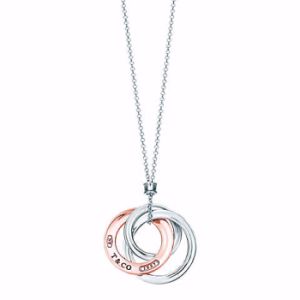Whilst it is difficult to obtain statutory trade mark protection for shape trade marks it is not impossible. To determine whether a shape trade mark is registrable one has to assess whether the proposed shape trade mark is inherently registrable i.e. is it distinctive or capable of distinguishing one's goods from those of third parties operating in a similar field of trade? The assessment also goes to the heart of what constitutes a trade mark, which is whether it functions as a badge of origin. It is important to note from the outset, that a shape mark that may be considered not to be sufficiently inherently distinctive to qualify for registration and may acquire distinctiveness through use and therefore be capable of registration.
In the 2016 Kit Kat case in the UK, Nestle failed in its attempt to register the shape of its four fingered Kit Kat chocolate bar. The Court held that the shape of a Kit Kat did not function as a badge of origin to consumers, unlike the word mark Kit Kat which serves as a source identifier, as consumers did not identify the product or its trade source through its shape primarily because the product is sold in a wrapper and the product itself is therefore not visible to consumers when viewed on the shelves. Does this mean that the shape of a product that is sold in packaging that obscures the shape is unlikely to be capable of trade mark registration going forward? Not necessarily, as other shape marks have been registered, in the UK for example, for products that are sold in such packaging, for example the Toblerone bar. One of the major stumbling blocks in the Kit Kat case was Nestle's failure to show that the shape of its chocolate bar had acquired distinctiveness through use and therefore functioned as a badge of origin.
In the recent 2016 London Taxi case in the UK, the London Taxi Company (the LTC), who was the proprietor of various 3D shape marks for the famous "Black Cab" in the EU and the UK, as depicted below:

sued Frazer-Nash Research Limited (FNR) and Ecotive Limited for trade mark infringement and passing off on the basis of the design of its Metrocab taxi depicted below:

One of FNR and Ecotive's main counter-claims was that the LTC's trade marks lacked distinctiveness. The Court (notably lead by the same judge as that in the Kit Kat case, namely Judge Arnold) held that the LTC's shape marks were not inherently distinctive, as the marks were not source identifiers to the relevant class of persons or average consumer, which was held to be the average taxi driver. The shape marks would be perceived by the average taxi driver, in Judge Arnold's view, as variants of the standard shape of a licensed London taxi or "black cab". As in the Kit Kat case, the LTC failed to adduce any survey evidence to show that the shape marks had acquired distinctiveness through use.
A piece of jewellery typically viewed by a consumer in a display cabinet (and thus in unpackaged form), if unique and distinctive, can function as a shape trade mark and therefore as a badge of origin and/or as a source identifier. For example, Tiffany & Co's interlocking circles pendant, depicted below, could function as a shape trade mark. In South Africa, a number of shape marks have been filed and registered in class 14 to cover jewellery products, giving brand owners a favourable unlimited monopoly in such an intellectual property right. Assuming certain jewellery "shapes" were filed, and held not to be inherently distinctive, furnishing sufficient evidence of prior use for at least two years prior to the date of filing, showing that the shape mark has acquired distinctiveness, and thus functions as a badge of origin and source identifier (as originating from Tiffany & Co, for example), may be sufficient for overcoming any inherent registrability concerns raised by the Registrar of Trade Marks. These would be raised by the Registrar of Trade Marks upon examination of the application for registration of the mark, or by the High Court if a third party dispute arose in which the distinctiveness of the mark was challenged.

© T & Co, 2016
As an additional form of intellectual property protection, filing an aesthetic design to protect the shape of an article whilst the shape in question acquires distinctiveness through use is recommended, as long as the shape is both new and original, as it is a quick process. Ideally a design application must be filed before the release date (which is when the design is first made available to the public) failing which it must be filed within 6 months from such release date. An aesthetic design registration endures for 15 years whilst a trade mark registration gives the proprietor a perpetual monopoly, as long as the trade mark is renewed every 10 years from the date of filing the original application.
Based on applicable trade mark law principles and an evaluation of foreign precedent where currently no recent local case law exists, if a proprietor wishes to obtain a trade mark registration, and thus an infinite monopoly in and to the shape of a specific product particularly where the shape is initially held not to be inherently distinctive, such proprietor should be in a position to produce evidence of use of the shape as a trade mark spanning at least 2 years prior to the date of filing the application. This will assist in showing that the shape has acquired distinctiveness through use, and therefore functions as a badge of origin.
The content of this article is intended to provide a general guide to the subject matter. Specialist advice should be sought about your specific circumstances.

